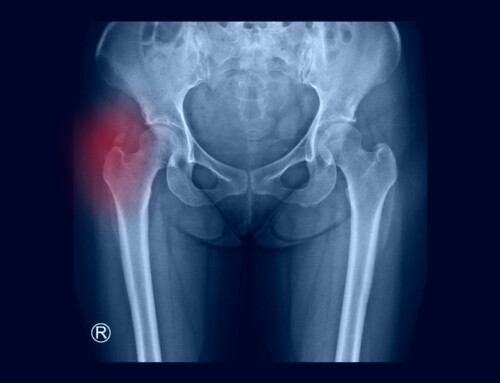By: Jazlyn Oliver, SPT
The Thoracic Outlet is a pathway in the body where specific nerves of the brachial plexus, veins, and arteries pass. It runs from the interscalene triangle (around the neck) to the costoclavicular space (under the clavicle) to the subcoricoid space (under the pectoralis minor muscle). Thoracic outlet syndrome is the compression of one or multiple neurovascular structures passing through the thoracic outlet.
Thoracic outlet pathway
Interscalene triangle
- Boarders: anterior scalene muscle, middle scalene muscle, first rib
- Contents: brachial plexus and subclavian artery
Costoclavicular space
- Borders: subclavius, first rib, anterior scalene, clavicle
- Contents: brachial plexus, subclavian artery, subclavian vein
Subcoracoid space
- Boarders: pec minor, ribs 2-4, coracoid process
- Contents brachial plexus, axillary artery, axillary vein
Causes
- Congenital abnormalities such as a cervical rib
- Trauma as the result of motor vehicle accidents (MVA)/whiplash injury and fractures
- Functionally acquired as the result of vigorous/repetitive motions as seen in sports such as baseball and swimming, occupation and musical instruments which incorporate repetitive overhead motions, and poor posture (forward head, rounded shoulders)
Types
Neurogenic TOS (most common), Venous TOS, and Arterial TOS (rare)
Neurogenic symptoms
- Numbness, paresthesia, and weakness in arm, hand, and fingers
- Pain in the neck and upper extremity, headaches
- Typically provoked by overhead motions such as combing/blow drying hair, dressing, driving, wearing a purse or backpack with strap on shoulder
Venous symptoms
- Arm swelling
- Skin discoloration (dark red, purple)
- Mild pain
- Feelings of arm tightness
Arterial symptoms
- Skin discoloration (white/ischemic)
- Claudication
- Pain at rest
- Numbness
Management: Early detection is crucial to prevent long term symptoms and damage! Initially, non-surgical management such as physical therapy is often attempted. If symptoms worsen or non-conservative treatment fails, surgery may be warranted.
Thoracic Outlet Syndrome (TOS) is just one condition that Capital Area PT therapists can provide assessment and treatment for. For additional information, contact our physical therapy clinics in Malta at 518-289-5242, Saratoga Springs at 518-289-5242 , or Queensbury – Glens Falls at 518-289-5242.
References
1. Jones MR, Prabhakar A, Viswanath O, et al. Thoracic Outlet Syndrome: A Comprehensive Review of Pathophysiology, Diagnosis, and Treatment. Pain Ther. 2019;8(1):5-18. doi:10.1007/s40122-019-0124-2
2. Thoracic Outlet Syndrome Medical Treatment Guidelines – Colorado. https://cdle.colorado.gov/sites/cdle/files/documents/Rule_17_Exhibit_3_Thoracic_Outlet_Syndrome_2.pdf. Accessed January 9, 2023.






